24 Wildflowers That Grow in Vermont (Identification Guide With Pictures)
-
Pete Ortiz
- Last updated:
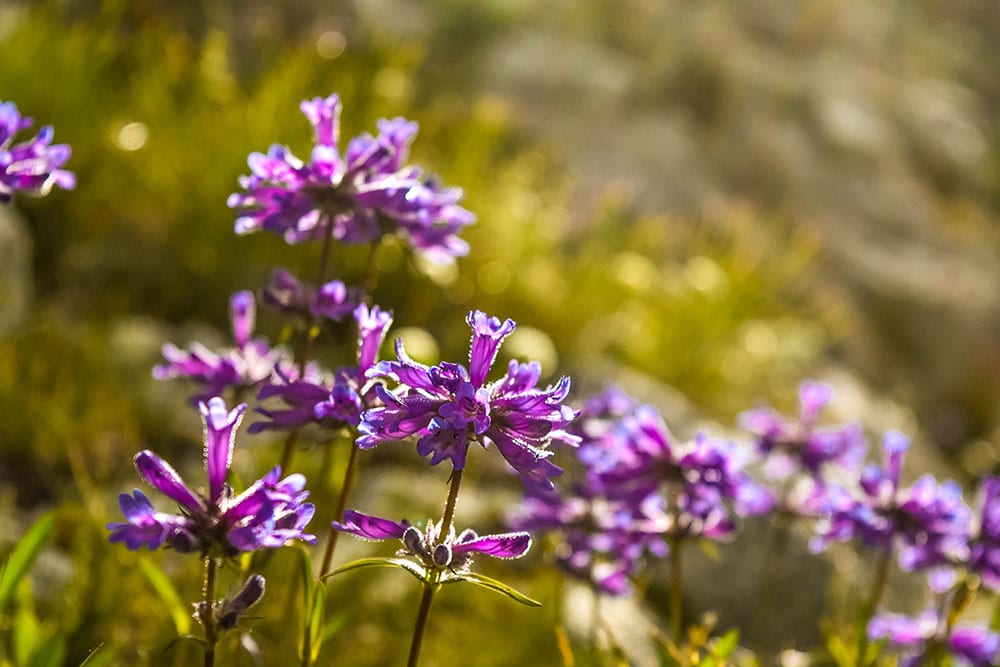
Vermont is home to abundant wildflowers with many subspecies and hybrids beautifying the natural landscapes. Although most wildflowers are indigenous to the zone where they grow, some have descended from flowering plants introduced from other areas.
While they grow wildly on their own, some species also make great additions to gardens. Because of the wide variety of wildflowers that can be spotted around Vermont, we have provided a list of some of the common ones, categorized by color, to help you easily identify what can and can’t be added to your native garden.
- Red and Orange Wildflowers
- Yellow Wildflowers
- White Wildflowers
- Pink and Purple Wildflowers
- Blue Wildflowers
The 24 Wildflowers That Grow in Vermont
Red and Orange
1. Columbine
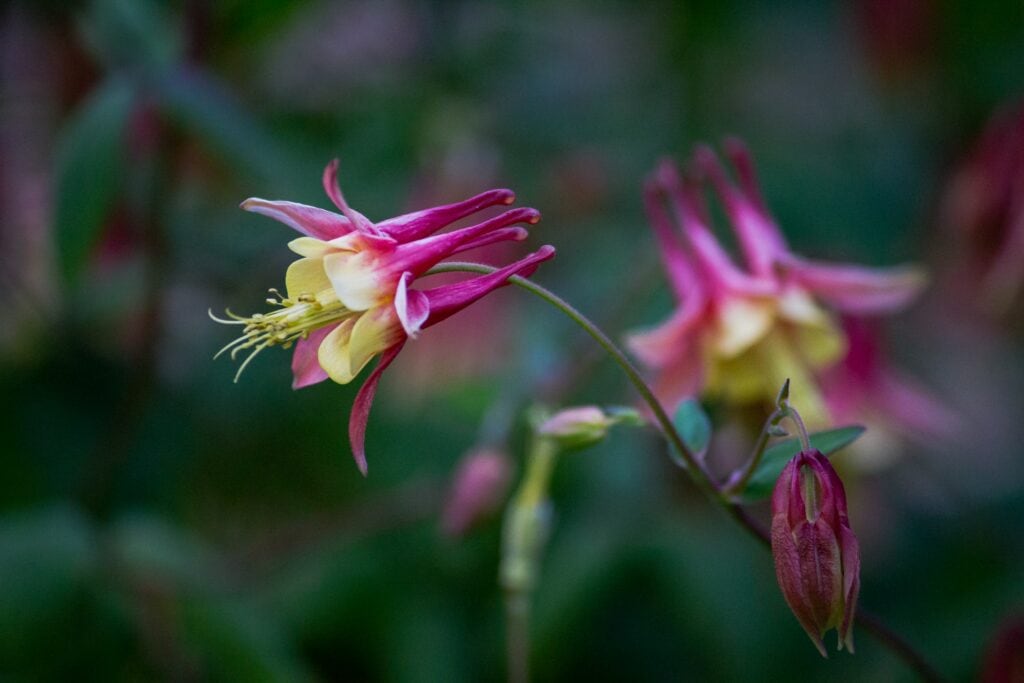
| USDA Hardiness Region: | 3b–8 |
| Bloom time: | Spring |
| Placement: | Partial sun/shade, moist, fertile soil |
Columbine flowers are usually recognized as purple and blue, but in Vermont, these flowers are red and can be spotted near rocky woodland areas drooping from the stem like a bell. They bloom in spring, reaching a height of up to 2–3 feet, and in midsummer, they set seeds and go semi-dormant, with the leaves turning purple and pink before fading away.
Other leaves may keep their color until fall. If you want to add this native flower to your landscape, you can grow them in pots or add them to your garden beds. They will provide a gorgeous floral display and a pop of color that attracts pollinators such as butterflies, bumblebees, and hummingbirds.
2. Cardinal Flower

| USDA Hardiness Region: | 3–9a |
| Bloom time: | Mid-summer to early fall |
| Placement: | Sun/partial shade, moist soil |
The wild Cardinal flower grows in marshes, streams, rivers, and lake shores. It can be identified by its symmetrical red petals and dark green leaves. Each flower has three lower petals that are spread apart and two upper petals that join at the base to form a tube. They can be a showy and aromatic flower to add to your garden, attracting pollinators and providing interest into the fall.
3. Spotted Coral Root

| USDA Hardiness Region: | 3–8 |
| Bloom time: | Early summer |
| Placement: | Full sun to partial shade |
Spotted Coralroot is a saprophytic orchid, which means it cannot photosynthesize and must obtain nutrients from decaying organic matter through a parasitic relationship with a fungal mycelium. This wildflower gets its name from its spotted petals and coral-like stems.
It grows in a wide range of woodlands and forests, preferring those with little or no herbaceous cover. Spotted Coralroot attracts mining bees, which pollinate this native orchid, but it can also self-pollinate by transferring pollen as the flower opens.
4. Trumpet Honeysuckle
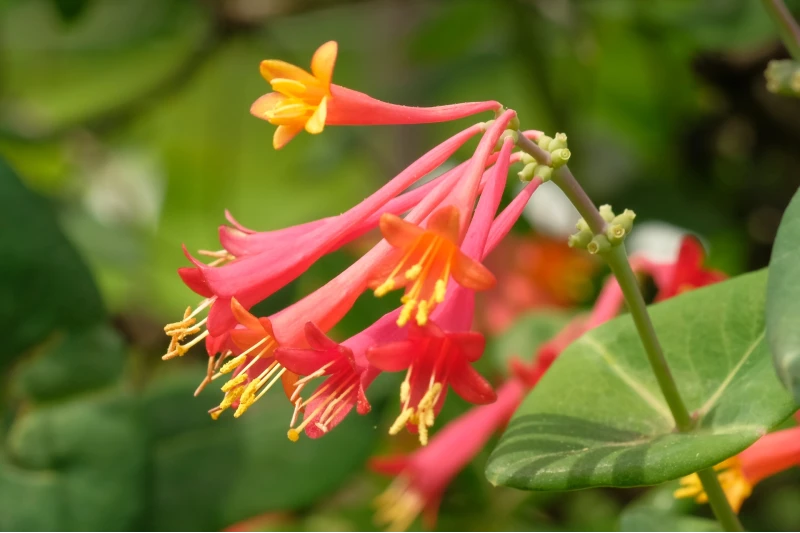
| USDA Hardiness Region: | 4b–9a |
| Bloom time: | Mid-spring to summer |
| Placement: | Full sun, well-draining soil |
Trumpet Honeysuckle is a climber with red tubular blooms that resemble the unique shape of a trumpet and grow in clusters at the end of the stems. They produce red berries in late summer to early fall, which attract hungry birds and pollinators. This wildflower can usually be spotted in Vermont in woodlands or forest edges. They make an excellent choice in the garden to cover walls, trellises, or fences and will provide interest all year round with their foliage.
5. Scarlet Bee Balm

| USDA Hardiness Region: | 4–9a |
| Bloom time: | Late spring to fall |
| Placement: | Full sun, moist, well-draining soil |
Scarlet Bee Balm occurs naturally in moist woodlands and thickets or along stream banks and can be recognized by its minty fragrance and dense, bright red flowers. They bloom for about 8 weeks in late spring to mid-fall and attract pollinators such as bees, butterflies, and hummingbirds.
Their fragrant leaves can be enjoyed in salads, and their long-lasting blooms make an attractive addition to a garden bed. Deadheading the flowers can encourage new buds, and you can cut the plant to the ground after flowering to promote new leaves and shoots.
Yellow
6. Birds Foot Trefoil
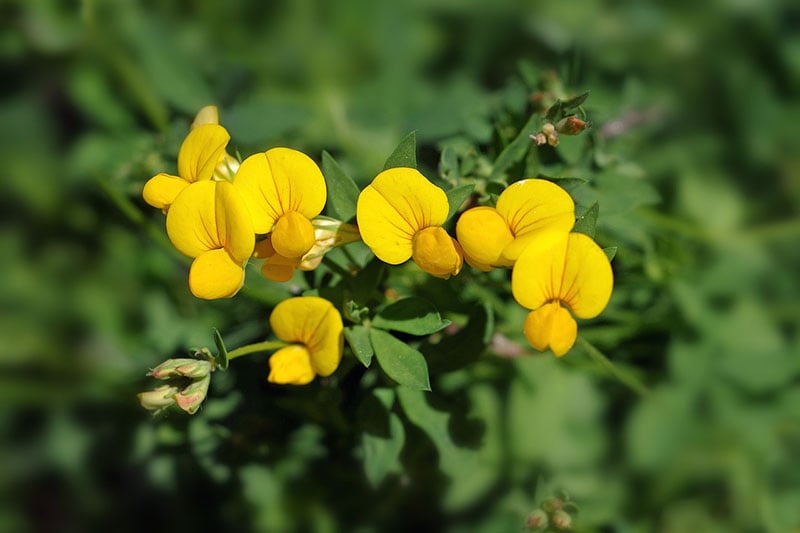
| USDA Hardiness Region: | 3–8 |
| Bloom time: | Late spring to early summer |
| Placement: | Full sun, and grow almost anywhere. |
The radial arrangement of the bright yellow seed pods gives the Bird’s-foot Trefoil its name. When it matures, the pods resemble a bird’s foot. These beautiful wildflowers can usually be spotted in meadows or fields.
Although the blooms are delightful, the trefoil is considered invasive in many parts of Vermont as it tends to smother native plants and take over entire gardens and fields. Birds foot trefoil can be a great addition to your garden to attract pollinators, as long as its growth is controlled.
7. St John’s Wort
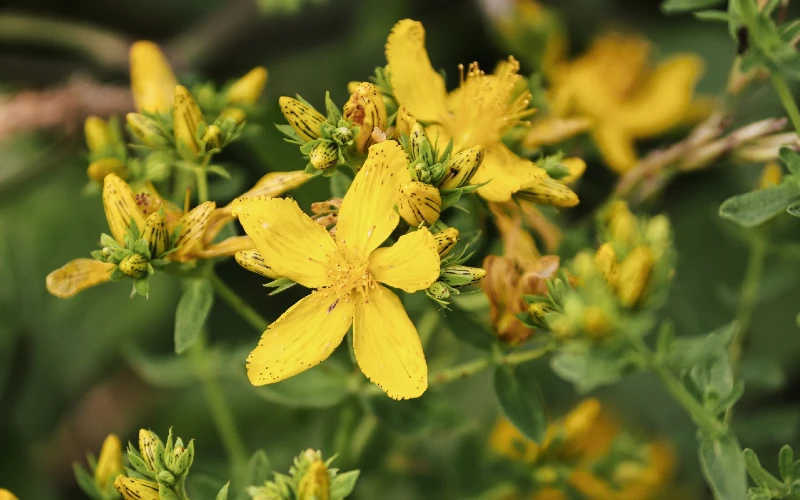
| USDA Hardiness Region: | 3–8 |
| Bloom time: | Summer |
| Placement: | Full sun, partial shade |
St John’s wort grows abundantly in pastures, fields, and sandy soils and can be recognized by its bright and showy yellow flowers. Besides recognizing this plant by its blooms, you can tell it is St John’s wort by squishing it in your hand and watching it magically turn purple.
This plant competes with other native plants, making it an invasive species, and it can also be fatal to livestock if it is ingested. Although St John’s wort is a beautiful flower and an attractor for pollinators, as well as a medicinal tea, it can do more harm than good to ecosystems, so it’s best not to allow this plant to spread in your garden.
8. Sneezeweed
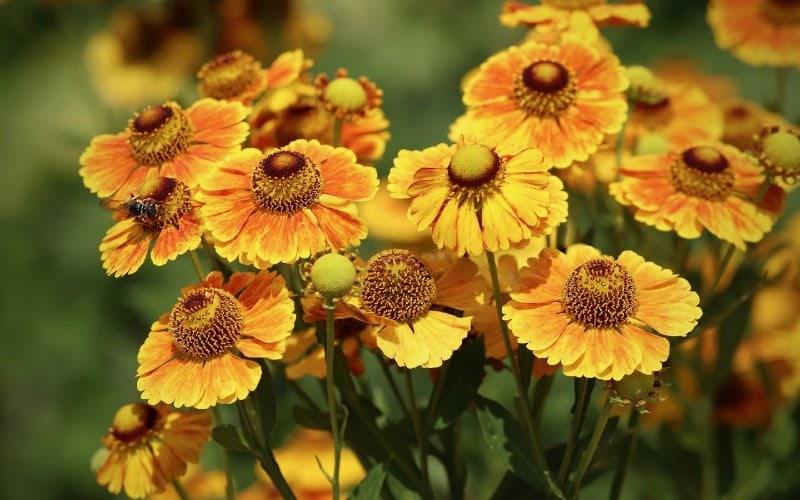
| USDA Hardiness Region: | 3–8a |
| Bloom time: | Late summer to fall |
| Placement: | Full sun, moist soil |
Sneezeweeds usually bloom in the fall and can be spotted in wetlands, ponds, and along streams in Vermont. They have bright yellow blooms, but sneezeweed pollen does not cause allergic reactions. The Cherokee tribe and other Native Americans used a dried powder of the plant as a snuff to induce sneezing to relieve congestion or headaches. They are a great flower to include in your garden as they bloom into fall, maintaining color while other flowers start to fade.
9. Black-eyed Susan

| USDA Hardiness Region: | 3–9 |
| Bloom time: | Summer to fall |
| Placement: | Full sun, well-draining moist soil |
Black Eyed Susans can be spotted by their striking black eye and bright yellow petals. These wildflowers can be found along roadsides, fields, and open woods and are a familiar favorite in gardens. They do well in containers and attract butterflies, bees, and other pollinating insects. They love the sun and are easy to grow.
10. Wild Parsnip
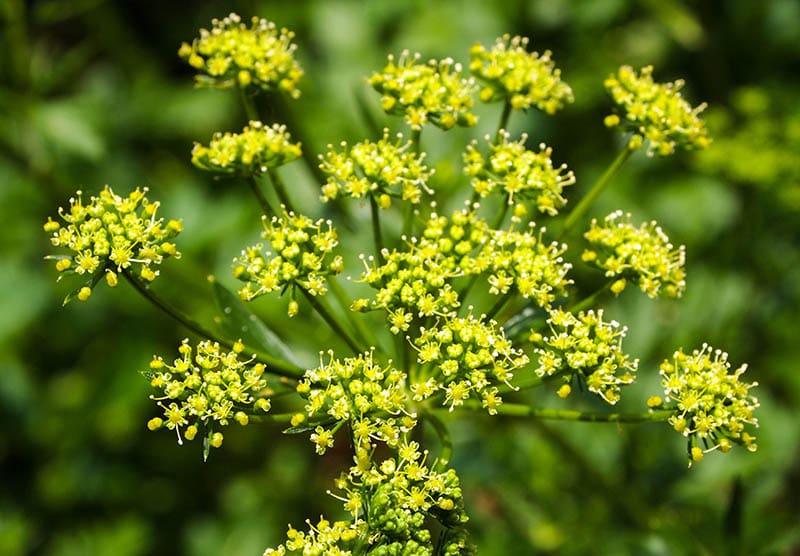
| USDA Hardiness Region: | 4–8 |
| Bloom time: | Early Summer |
| Placement: | Full sun to partial shade |
Wild parsnip grows in abundance throughout Vermont. The plants, which produce yellow flowers, grow wild along roadsides and other untended areas. Parsnip is a popular and delicious root vegetable, but the wild variety you find in Vermont is not as beneficial to your health.
In fact, it can be quite harmful. Wild parsnips smell and look similar to the parsnips we know, but in the presence of sunlight, wild parsnips produce sap that causes blisters and burns if they contact your skin.
White
11. Fleabane
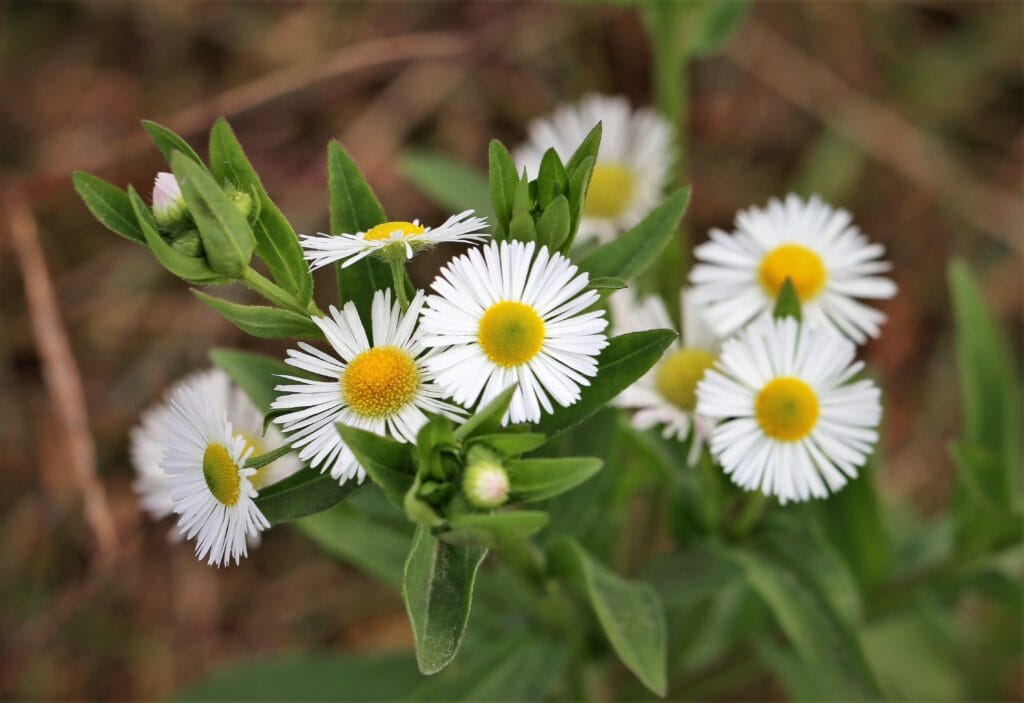
| USDA Hardiness Region: | 2–8a |
| Bloom time: | Spring to fall |
| Placement: | Full sun, partial shade, well-draining soil |
Fleabane is a cultivar with at least 400 species, many of which are native Vermont wildflowers. From spring to fall, these white daisy flowers bloom abundantly in pastures, roadsides, and grasslands. They are also a gardener’s favorite since they are easy to care for and attract butterflies, bees, moths, and hummingbirds. The flowers are white when they first bloom but gradually fade to a soft pink and then purple.
12. Indian Hemp

| USDA Hardiness Region: | 3b–11 |
| Bloom time: | Spring to summer |
| Placement: | Full sun to partial shade |
Indian hemp can be found in meadows and dry rocky woods, as well as farms where it unfortunately reduces the yield of some crops. Despite its native North American origins, this wildflower is considered an invasive weed in Vermont. It can be identified by its rigid, red stems, bushy leaves and tiny white flower clusters. Indians used the fibers from the stem to make bags, mats. Despite attracting pollinators, Indian hemp is toxic to humans and pets, and its sap can cause blisters on the skin.
13. English Plantain
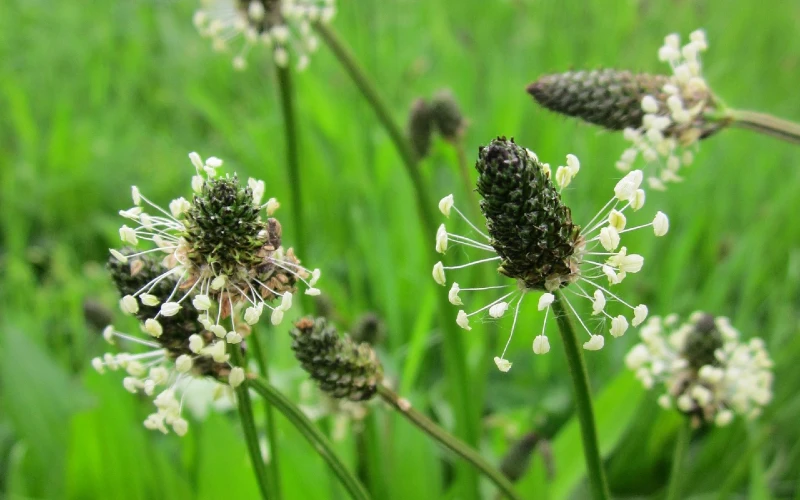
| USDA Hardiness Region: | 5–9a |
| Bloom time: | Spring to fall |
| Placement: | Full sun |
The English Plantain is a wildflower introduced to Vermont from Europe and Asia. It grows abundantly in lawns, roadsides, meadows, and undisturbed areas. It has a green, leafless stalk that rises above the leaves in late summer, with long, bristly clusters of tiny, densely packed flowers with white stamens.
The plantain is one of those underappreciated plants that actually has a lot to offer. It benefits the environment by restoring disturbed and compacted soil and is best known as a wound-healing remedy.
14. Yarrow
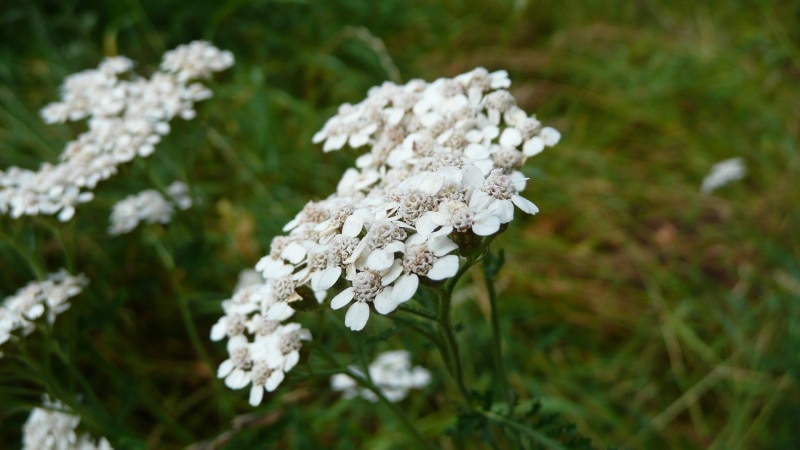
| USDA Hardiness Region: | 3–9 |
| Bloom time: | Summer |
| Placement: | Full sun, well-draining soil |
Some Yarrow plants were brought from Europe and there are numerous native subspecies of this wildflower found in Vermont. They grow naturally along roadsides, grasslands, and open forests. Yarrow can reach 3 feet in height and has no branches except near the top, where clusters of small white flowers bloom.
This wildflower is popular with pollinators and requires little maintenance, making it ideal for borders, ground covers, and containers. The plant is also an aromatic herb with many healing properties; despite its many beneficial properties, yarrow can be an invasive grower that quickly pushes out its neighbors.
15. Catnip
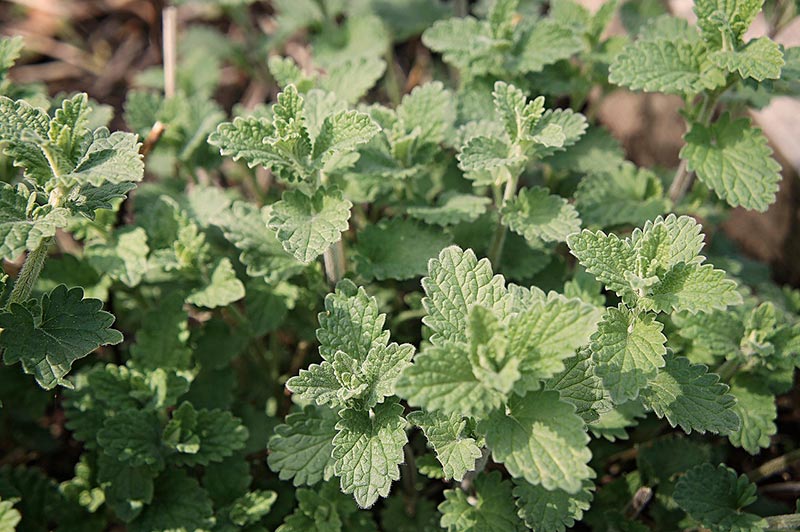
| USDA Hardiness Region: | 3–9a |
| Bloom time: | Spring to fall |
| Placement: | Full sun, well-draining soil |
Catnip is native to Europe and Asia but has become a naturalized wildflower in Vermont. It grows along roadsides and streams, fields, and dry banks, and it can be identified by its mint-like leaves and tiny white flowers with purple spots.
Catnip is known by most as a stimulant for cats but is also popular for its medicinal and culinary use. You can plant this wildflower in your garden to attract pollinators, and its aromatic leaves can help to repel mosquitoes and termites. Furthermore, your cat will love rolling around in it.
Pink and Purple
16. Swamp Milkweed
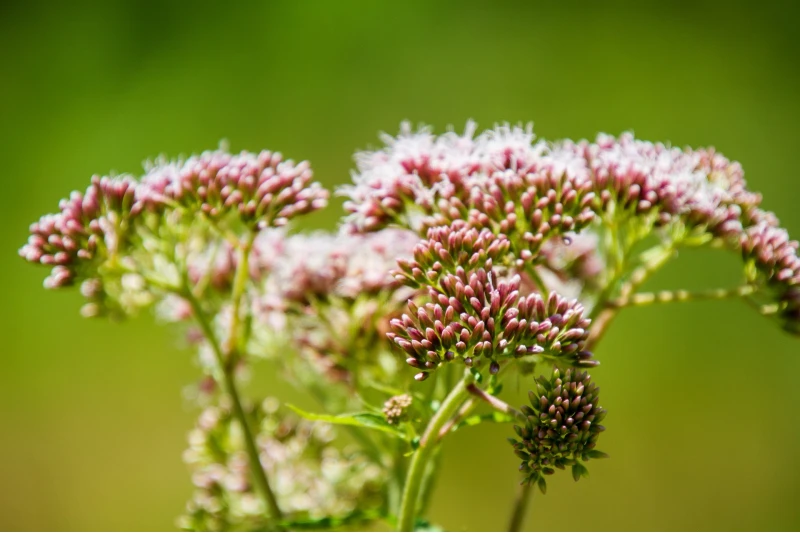
| USDA Hardiness Region: | 3–11 |
| Bloom time: | Summer to fall |
| Placement: | Full sun to partial shade, moist soil |
Swamp Milkweed can be found in wet meadows, stream banks, and marshes and is a native wildflower in Vermont. It can be identified by its dense clusters of tiny deep pink flowers and when broken, they ooze a milky juice. Swamp milkweed is a magnet for butterflies, particularly the monarch butterfly, which only lays eggs on milkweeds. Swamp milkweed makes an excellent addition to any native garden, but despite its beauty, it can be toxic to humans and pets.
17. Spreading Dogbane
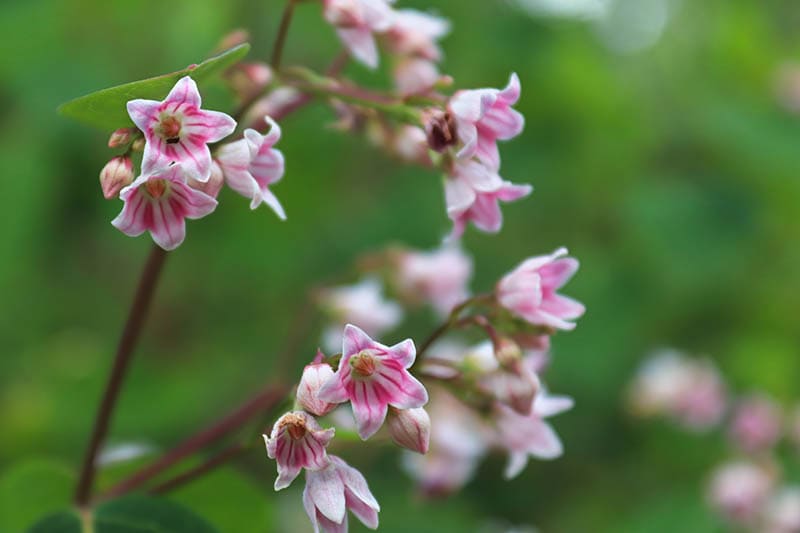
| USDA Hardiness Region: | 2–9 |
| Bloom time: | Summer |
| Placement: | Partial sun, sandy soil |
Spreading Dogbane can be found along stream banks, woodlands, fields, and forest edges in Vermont and can be recognized by its small, pink bell-like flowers. As its name suggests, it is an abundant grower. The flowers produce nectar, which is an essential source of food for insects, particularly the monarch butterfly. When broken open, it oozes a toxic sticky sap.
18. Common Burdock

| USDA Hardiness Region: | 4a–10b |
| Bloom time: | Mid-summer to mid-fall |
| Placement: | Full sun to partial shade |
Common burdock can be easily identified because of its resemblance to Rhubarb. Burdocks are tall plants that can grow to be 5 to 9 feet tall when mature and have large green leaves. The flowers are made of purple, needle-like clusters.
You can find these wildflowers growing along roadsides, old fields, prairies, and other undisturbed areas in Vermont. Bees, butterflies, and birds are drawn to burdocks. However, be cautious when handling this plant as it can cause skin irritation or an allergic reaction.
19. Bee Balm
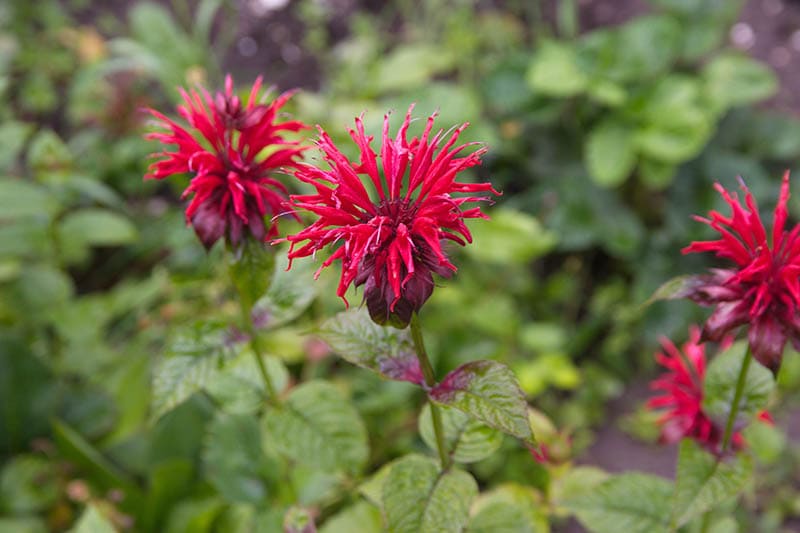
| USDA Hardiness Region: | 3a-9b |
| Bloom time: | Summer |
| Placement: | Full sun, moist soil |
In Vermont, Bee Balm can be found along roadsides, in dry fields, and prairies. Bee balm is a native American plant known not only for its beautiful purple flowers that bloom in the summer, but also for its aromatic foliage. Because of its height, bee balm makes a beautiful background plant in a flower bed, and the seed heads, in addition to attracting pollinators, will attract birds in the fall and winter.
20. Joe Pye Weed

| USDA Hardiness Region: | 3–9 |
| Bloom time: | Summer to fall |
| Placement: | Full sun to partial shade |
The Eutrochium family includes several species, all of which are known collectively as Joe Pye weed. Joe Pye Weed is native to Vermont and grows naturally at the edges of woodlands and wet meadows. It is identified by large pink flower clusters at the ends of long stems that reach up to 7 feet. These wildflowers have a sweet vanilla scent that attracts butterflies and other pollinators, and they have become a popular plant for native gardens.
Blue
21. Chicory
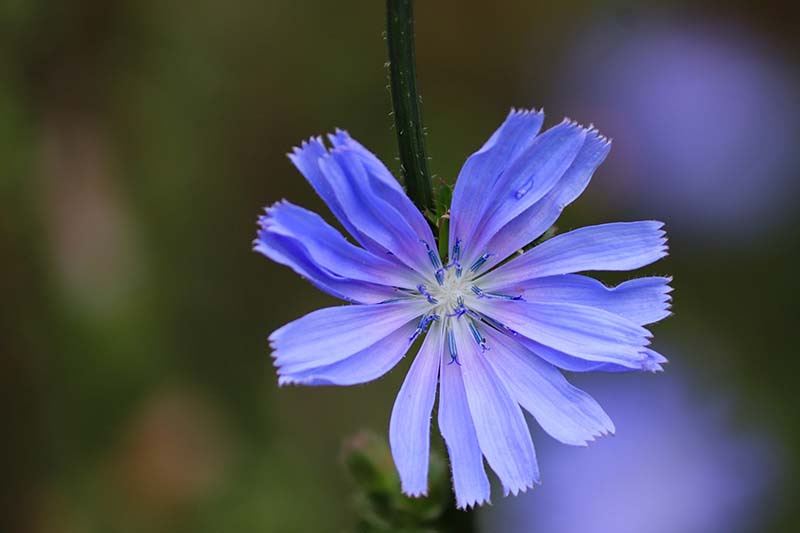
| USDA Hardiness Region: | 3–10 |
| Bloom time: | Summer to fall |
| Placement: | Full sun |
While Chicory is non-native, it can be found throughout Vermont, usually along roadsides and open fields. The stems are stiff and hairy, reaching up to 3 feet in height, and the flowers are purplish blue, varying from light to dark depending on age and how much sunlight it receives.
Each individual flower will never open again, and the flowers that have already bloomed will fall off within a day or two. White pollen accumulates at the tips of the stamens in the early morning, attracting bees and butterflies. The root is a tasty substitute for coffee, and its high inulin content has earned it a reputation as a health food. The leaves and flowers are also edible.
22. Blue Vervain

| USDA Hardiness Region: | 3–9 |
| Bloom time: | Early summer to fall |
| Placement: | Full to partial sun, moist conditions |
Blue vervain is a North American native wildflower that grows along roadsides, streams, and in moist, grassy meadows. It is recognized by its tall and spiky, bluish-purple blooms. Blue vervain plants in the garden attracts bees and other pollinators, and the seeds provide nutrients to songbirds. It is also an ancient medicinal herb, with the roots, leaves, and flowers used to treat a range of ailments.
23. Common Blue Violet
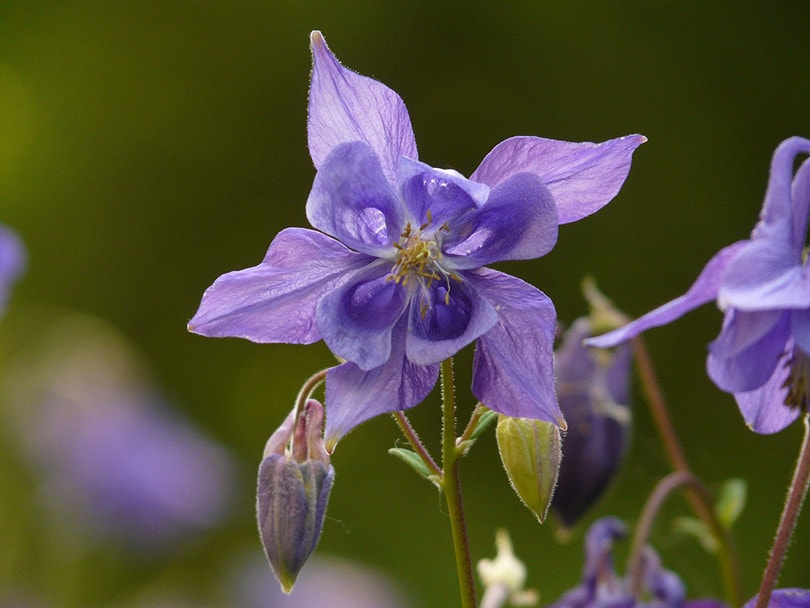
| USDA Hardiness Region: | 3–10 |
| Bloom time: | Spring to late summer |
| Placement: | Partial sun, rich soil |
The Common Blue Violet is a beautiful wildflower, recognized by its heart shaped leaves and large violet-blue flowers, that will often just pop in your yard. However, in Vermont they are considered a weed. The leaves are high in vitamins A and C and can be used in salads, and the flowers can be used in jellies or candies.
24. Common Periwinkle
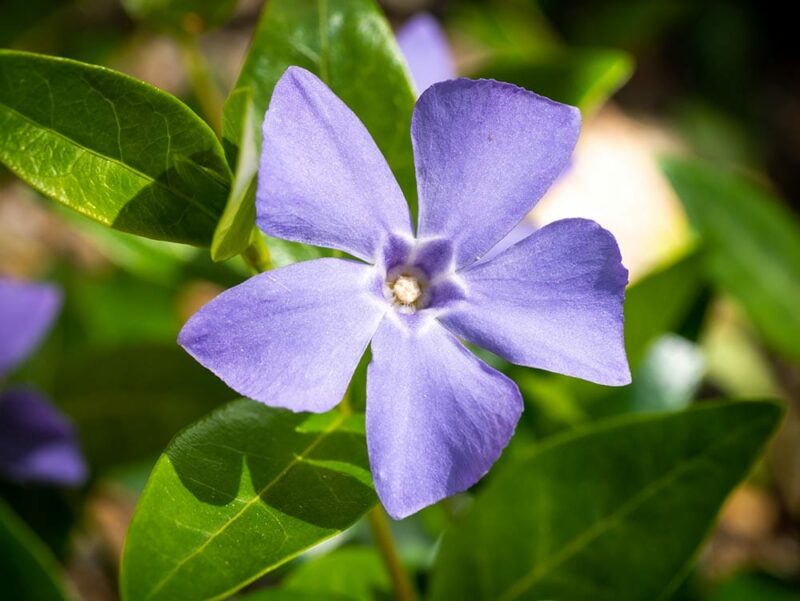
| USDA Hardiness Region: | 4–9 |
| Bloom time: | All year |
| Placement: | Full sun to partial shade |
Although the Common Periwinkle is not indigenous to North America, it was introduced as a medicinal herb and ornamental groundcover. It is a 6-inch-tall evergreen with dark green leaves and small, blue-purple flowers with five petals. Because of its evergreen foliage, spring and summer flowers, and ease of cultivation, it is a popular groundcover.
Conclusion
Vermont has a colorful variety of wildflowers that add brightness and texture to the landscape. Several species of wildflowers can also be used to beautify home gardens and attract pollinators. Native plants that are adapted to your environment and will grow without much care, but if you decide to grow wildflowers that are not native to your area, keep in mind that they may require some extra attention.
Featured Image Credit: Nichimar, Shutterstock
Contents


